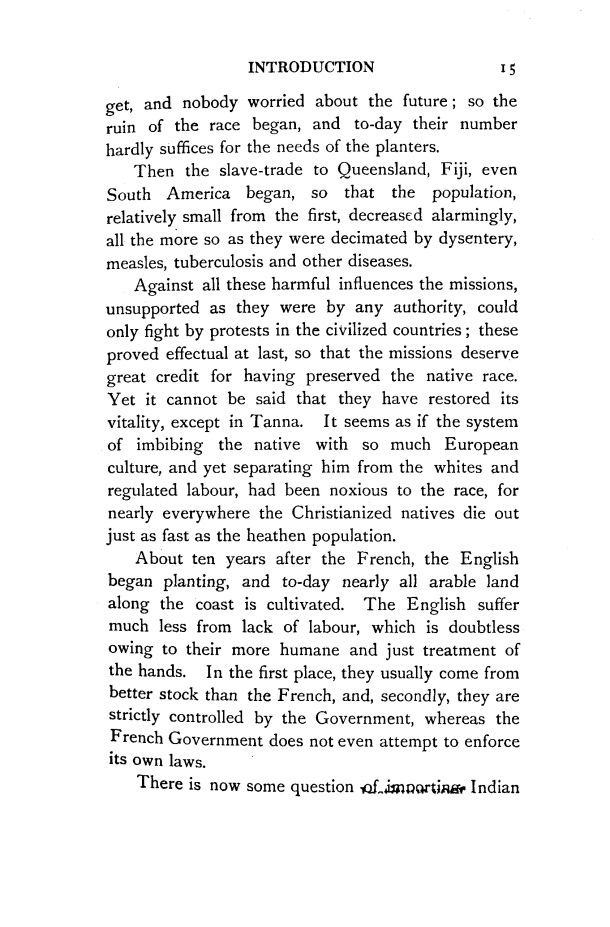|
|  [Note: this transcription was produced by an automatic OCR engine]
INTRODUCTION I 5
get, and nobody worried about the future; so the
ruin of the race began, and to-day their number
hardly suffices for the needs of the planters.
Then the slave-trade to Queensland, Fiji, even
South America began, so that the population,
relatively small from the first, decreased alarmingly,
all the more so as they were decimated by dysentery,
measles, tuberculosis and other diseases.
Against all these harmful influences the missions,
unsupported as they were by any authority, could
only fight by protests in the civilized countries; these
proved effectual at last, so that the missions deserve
great credit for having preserved the native race.
Yet it cannot be said that they have restored its
vitality, except in Tanna. It seems as if the system
of imbibing the native with so much European
culture, and yet separating him from the whites and
regulated labour, had been noxious to the race, for
nearly everywhere the Christianized natives die out
just as fast as the heathen population.
About ten years after the French, the English
began planting, and to-day nearly all arable land
along the coast is cultivated. The English suffer
much less from lack of labour, which is doubtless
owing to their more humane and just treatment of
the hands. In the first place, they usually come from
better stock than the French, and, secondly, they are
strictly controlled by the Government, whereas the
French Government does not even attempt to enforce
ltS own laws. '
There is now some question afflimpqrtiam Indian
|